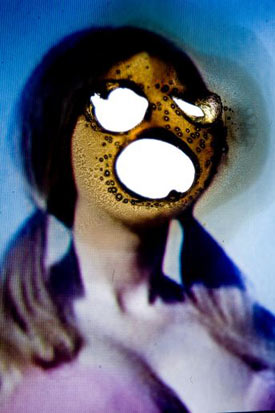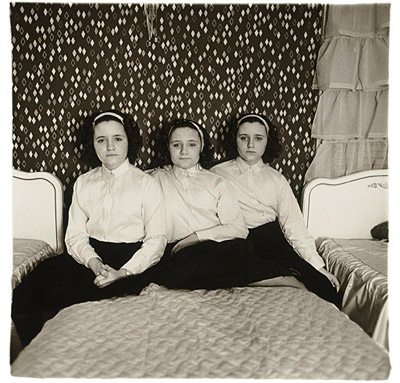science

Once upon a time, a neurosurgeon named Eben Alexander contracted a bad case of bacterial meningitis and fell into a coma. While immobile in his hospital bed, he experienced visions of such intense beauty that they changed everything. […] Our current understanding of the mind “now lies broken at our feet”—for, as the doctor writes, “What happened to me destroyed it, and I intend to spend the rest of my life investigating the true nature of consciousness.” […]
Well, I intend to spend the rest of the morning sparing him the effort. […]
Everything—absolutely everything—in Alexander’s account rests on repeated assertions that his visions of heaven occurred while his cerebral cortex was “shut down,” “inactivated,” “completely shut down,” “totally offline,” and “stunned to complete inactivity.” The evidence he provides for this claim is not only inadequate—it suggests that he doesn’t know anything about the relevant brain science.
{ Sam Harris | Continue reading }
related { Have you ever noticed that more people come back from Heaven than from Hell? }
photo { Henry Peach Robinson, Fading Away, 1858 | more: Faking It: Manipulated Photography Before Photoshop at the Metropolitan Museum of Art }
neurosciences, photogs | October 15th, 2012 8:58 am

Cerebral cortex has a very large number of testosterone receptors, which could be a basis for sex differences in sensory functions. For example, audition has clear sex differences, which are related to serum testosterone levels. Of all major sensory systems only vision has not been examined for sex differences, which is surprising because occipital lobe (primary visual projection area) may have the highest density of testosterone receptors in the cortex. We have examined a basic visual function: spatial and temporal pattern resolution and acuity. […]
Across the entire spatio-temporal domain, males were more sensitive, especially at higher spatial frequencies; similarly males had significantly better acuity at all temporal rates. […]
We suggest that testosterone plays a major role, leading to different connectivities in males and in females. But, for whatever reasons, we find that males have significantly greater sensitivity for fine detail and for rapidly moving stimuli. One interpretation is that this is consistent with sex roles in hunter-gatherer societies.
{ Biology of Sex Differences/NCBI | Continue reading }
We examined the possible sex differences in color appearance of monochromatic lights across the visible spectrum. There is a history of men and women perceiving color differently. However, all of these studies deal with higher cognitive functions which may be culture-biased. We study basic visual functions, such as color appearance, without reference to any objects. […]
There were relatively small but clear and significant, differences between males and females in the hue sensations elicited by almost the entire spectrum. Generally, males required a slightly longer wavelength to experience the same hue as did females.
{ Biology of Sex Differences | PDF }
image { Jaymes Sinclair }
colors, eyes, genders, photogs | October 15th, 2012 6:31 am

Kathryn Graham and her colleagues trained 148 observers and sent them out to 118 bars in early-hours Toronto where they recorded 1,057 instances of aggression from 1,334 visits. Where the majority of psychology research on aggression is based on laboratory simulations, Graham’s team collected real-life observational data to find out who gets aggressive and why.
The researchers followed the Theory of Coercive Actions, according to which aggressive acts have one or more motives: compliance (getting someone to do something, or stop doing something); grievance; social identity (to prove one’s status and power); and thrill-seeking.
Unsurprisingly, the vast majority (77.5 per cent) of aggressive acts were instigated by men. Men more than women were driven to aggression by identity and thrill-seeking motives; by contrast female aggression was more often motivated by compliance and grievance. This often had a defensive intent, as a reaction against unwanted sexual advances. […]
The researchers found that greater intoxication led to more serious aggression in women, but not men - perhaps because the latter were emboldened enough already.
{ BPS | Continue reading }
fights, food, drinks, restaurants, genders, psychology | October 15th, 2012 6:13 am

Generally, we think of children as having more supernatural beliefs. As they age and gain education and information (as well as brain development) they abandon the supernatural for science. Right? Apparently not. These researchers show that we retain both supernatural and scientific ideas–flexibly combining or interchanging them to explain various events.
For example, “a person might explain AIDS using witchcraft in one instance, biology in another, or combine the two in a third instance.” Indeed, say the researchers, the tendency to invoke the supernatural explanation increases with age rather than decreases.
{ Keene Trial | Continue reading }
psychology | October 14th, 2012 11:33 am

Human beings form their beliefs about reality based on the constant torrent of information our brains receive through our senses. But some information is accepted and incorporated into our beliefs more easily than another one. More specifically, we’re all very eager to update our beliefs based on good news rather than on its bad counterpart. This widespread tendency to be disinclined to integrate negative information into our beliefs is known as the “good news/bad news effect.” […]
A new study by Tali Sharot et al. has shown that this bias towards good news can be decreased through transcranial magnetic stimulation, which involves exposing certain brain regions to a magnetic field.
{ United Academics | Continue reading }
photo { Joel Meyerowitz }
brain | October 12th, 2012 1:25 pm

images { 1. Richard Kalvar | 2. Ellsworth Kelly, Black and White, 1961 }
genes, health, science | October 11th, 2012 3:16 pm

Researchers have discovered that a form of oxytocin — the hormone responsible for making humans fall in love — has a similar effect on fish, suggesting it is a key regulator of social behavior that has evolved and endured since ancient times.
{ EurekAlert | Continue reading }
art { Francisco Castro }
hormones, relationships | October 11th, 2012 3:10 pm

Many of us use them several times a day without really noticing. And yet the way we behave in lifts, or elevators as they are known in the US, reveals a hidden anxiety.
“Most of us sort of shut down. We walk in. We press the button. We stand perfectly still.”
{ BBC | Continue reading }
psychology, relationships | October 10th, 2012 7:22 am

Heaven is hotter than hell
Proof:
The temperature of heaven can be rather accurately computed. Our authority is the Bible, Isaiah 30:26 reads,
Moreover, the light of the moon shall be as the light of the sun and the light of the sun shall be sevenfold as the light of seven days.
Thus, heaven receives from the moon as much radiation as the earth does from the sun, and in addition seven times seven (forty nine) times as much as the earth does from the sun, or fifty times in all. The light we receive from the moon is one ten-thousandth of the light we receive from the sun, so we can ignore that. With these data we can compute the temperature of heaven: The radiation falling on heaven will heat it to the point where the heat lost by radiation is just equal to the heat received by radiation. In other words, heaven loses fifty times as much heat as the earth by radiation. Using the Stefan-Boltzmann fourth power law for radiation
(H/E)4 = 50
where E is the absolute temperature of the earth, 300°K (273+27). This gives H the absolute temperature of heaven, as 798° absolute (525°C).
The exact temperature of hell cannot be computed but it must be less than 444.6°C, the temperature at which brimstone or sulfur changes from a liquid to a gas. Revelations 21:8: But the fearful and unbelieving… shall have their part in the lake which burneth with fire and brimstone.” A lake of molten brimstone [sulfur] means that its temperature must be at or below the boiling point, which is 444.6°C. (Above that point, it would be a vapor, not a lake.)
We have then, temperature of heaven, 525°C. Temperature of hell, less than 445°C. Therefore heaven is hotter than hell.
Refutation:
In Applied Optics (1972, 11 A14) there appeared a calculation of the respective temperatures of Heaven and Hell. That of Heaven was computed by substituting the values given in Isaiah 30 26 in the Stefan-Boltzman radiation law. […] This is hard to find fault with. The assessment of the temperature of Hell stands, I suggest, on less firm ground.
{ Applied Optics/Journal of Irreproducible Results | Continue reading }
photo { Harold Diaz }
allegories, archives, fire, mathematics | October 9th, 2012 6:17 am
ideas, mathematics | October 8th, 2012 7:36 am

The first rapid [20 minutes] home-testing kit for H.I.V. has just gone on sale for $40, marketed as a way for people to find out privately if they have the virus that causes AIDS.
But some experts and advocates say that another use, unadvertised, for the OraQuick test — to screen potential sexual partners — may become equally popular and even help slow an epidemic stuck at 50,000 new infections each year in the United States.
There are reasons to think that screening might make a difference. Studies have found that a significant minority of people who are H.I.V.-positive either lie about their status or keep it secret, infecting unsuspecting partners.
And though the manufacturer, OraSure Technologies, is not promoting the use of the test for screening, 70 percent of the 4,000 men and women in the company’s clinical trials said they would either definitely or very likely use it that way. Some even suggested that the company sell boxes of two so couples could be tested together. […]
The OraQuick test is imperfect. It is nearly 100 percent accurate when it indicates that someone is not infected and, in fact, is not. But it is only about 93 percent accurate when it says that someone is not infected and the person actually does have the virus, though the body is not yet producing the antibodies that the test detects.
{ NY Times | Continue reading }
photo { Emmet Gowin }
health, relationships, science, sex-oriented | October 8th, 2012 7:22 am

For a small group of people—perhaps just 1% to 3% of the population—sleep is a waste of time.
Natural “short sleepers,” as they’re officially known, are night owls and early birds simultaneously. They typically turn in well after midnight, then get up just a few hours later and barrel through the day without needing to take naps or load up on caffeine.
They are also energetic, outgoing, optimistic and ambitious, according to the few researchers who have studied them. The pattern sometimes starts in childhood and often runs in families. […]
Out of every 100 people who believe they only need five or six hours of sleep a night, only about five people really do, Dr. Buysse says. The rest end up chronically sleep deprived, part of the one-third of U.S. adults who get less than the recommended seven hours of sleep per night. […]
Dr. Fu was part of a research team that discovered a gene variation, hDEC2, in a pair of short sleepers in 2009. They were studying extreme early birds when they noticed that two of their subjects, a mother and daughter, got up naturally about 4 a.m. but also went to bed past midnight.
Genetic analyses spotted one gene variation common to them both. The scientists were able to replicate the gene variation in a strain of mice and found that the mice needed less sleep than usual, too.
{ WSJ | Continue reading }
photo { Diane Arbus }
genes, sleep | October 8th, 2012 7:19 am

What number is halfway between 1 and 9? Is it 5 — or 3?
Ask adults from the industrialized world what number is halfway between 1 and 9, and most will say 5. But pose the same question to small children, or people living in some traditional societies, and they’re likely to answer 3.
Cognitive scientists theorize that that’s because it’s actually more natural for humans to think logarithmically than linearly: 30 is 1, and 32 is 9, so logarithmically, the number halfway between them is 31, or 3. Neural circuits seem to bear out that theory. For instance, psychological experiments suggest that multiplying the intensity of some sensory stimuli causes a linear increase in perceived intensity.
In a paper that appeared online last week in the Journal of Mathematical Psychology, researchers from MIT’s Research Laboratory of Electronics (RLE) use the techniques of information theory to demonstrate that, given certain assumptions about the natural environment and the way neural systems work, representing information logarithmically rather than linearly reduces the risk of error.
{ MIT | Continue reading }
photo { Rupp Worsham }
ideas, mathematics, spinoza | October 6th, 2012 10:58 am

Try to recall the last time you were angry, depressed, or anxious. What did you want to do with those feelings? There is a good chance you had an urge to text your best friend, post a Facebook status update, or write in your journal. We often want to get things off our chest and prevent them from festering inside of us. If we pick the right outlet, disclosing our emotions can help us feel better in the moment. Furthermore, there’s evidence that emotional disclosure through writing can improve mental and physical health outcomes months and even years later.
{ Psych Your Mind | Continue reading }
psychology | October 5th, 2012 10:13 am

Through three separate experiments a team of scientists from Hiroshima University showed that people showed higher levels of concentration after looking at pictures of puppies or kittens. […]
“This finding suggests that viewing cute images makes participants behave more deliberately and perform tasks with greater time and care,” said the researchers, according to the published paper. […]
The study’s authors write that in the future cute objects could be used as a way to trigger emotions “to induce careful behavioral tendencies in specific situations, such as driving and office work.”
{ WSJ | Continue reading }
cuties, economics, psychology | October 5th, 2012 8:19 am

The authors’ basic idea is that many men, wishing to appear ‘manly’, don’t talk about or get help for their problems, especially psychological issues: boys don’t cry, and men certainly don’t. However, the authors argue that gay men, generally less encumbered by traditional masculinity, may be an exception to this rule. […]
In accordance with the authors’ predictions, gay men were indeed more open to seeking psychological help.
But unexpectedly, they were actually less likely to report experiencing psychological distress. That’s surprising, given several previous reports of higher rates of mental illness in homosexuals, which has been dubbed ‘velvet rage’.
Sánchez et al’s data suggest that gay men may be, er, more gay (…the other kind), and that their increased rates of diagnosed mental illness are a product of their greater willingness to seek help: maybe straight men are just in denial.
{ Neuroskeptic | Continue reading }
photo { Robert Mapplethorpe }
psychology, relationships | October 5th, 2012 6:34 am
brain, photogs, science | October 4th, 2012 12:02 pm

Most of the occasional singers sang as accurately as the professional singers. Thus, singing appears to be a universal human trait.
However, two of the occasional singers maintained a high rate of pitch errors at the slower tempo. This poor performance was not due to impaired pitch perception, thus suggesting the existence of a purely vocal form of tone deafness.
{ Acoustical Society of America | PDF }
music, science | October 4th, 2012 6:59 am

The idea that humans walk in circles is no urban myth. This was confirmed by Jan Souman and colleagues in a 2009 study, in which participants walked for hours at night in a German forest and the Tunisian Sahara. […]
Souman’s team rejected past theories, including the idea that people have one leg that’s stronger or longer than the other. If that were true you’d expect people to systematically veer off in the same direction, but their participants varied in their circling direction.
Now a team in France has made a bold attempt to get to the bottom of the mystery. […] [It] suggests that our propensity to walk in circles is related in some way to slight irregularities in the vestibular system. Located in inner ear, the vestibular system guides our balance and minor disturbances here could skew our sense of the direction of “straight ahead” just enough to make us go around in circles.
{ BPS | Continue reading }
photo { Hans Bellmer }
brain, neurosciences, photogs | October 4th, 2012 5:59 am

[A possible explanation for why we enjoy watching sad films]
Media psychologists have long puzzled over how individuals can experience enjoyment from entertainment such as tragedies that often elicit profound feelings of sadness. The present research examines the idea that a focus on “meaningful” entertainment and affective responses identified as “elevation” may provide a framework for understanding many examples of sad or dramatic entertainment. The results of this study suggest that many types of meaningful cinematic entertainment feature portrayals of moral virtues (e.g., altruism). These portrayals, in turn, elicit feelings of elevation (e.g., inspiration) that are signified in terms of mixed affect and unique physical responses (e.g., lump in throat). Ultimately, elevation also gives rise to motivations to embody moral virtues, such as being a better person or helping others.
{ Wiley | via BPS }
pastel on paper { Johannes Kahrs }
psychology, showbiz | October 3rd, 2012 11:53 am






















